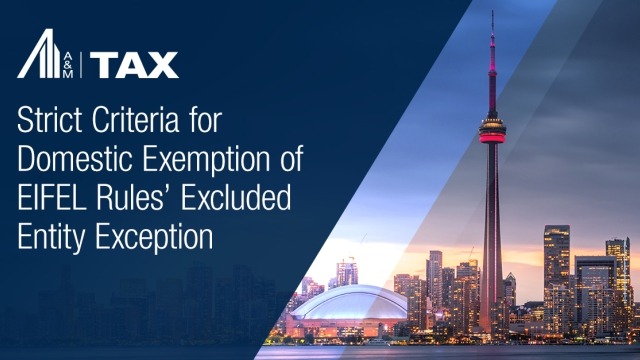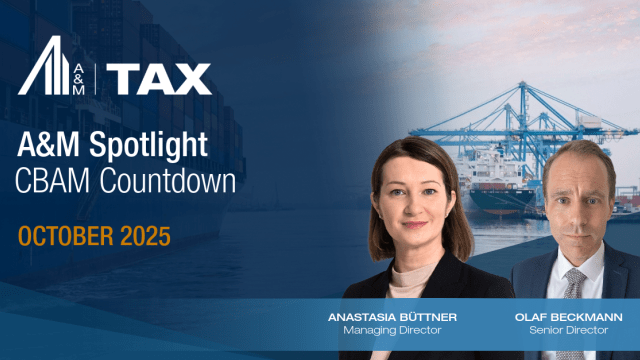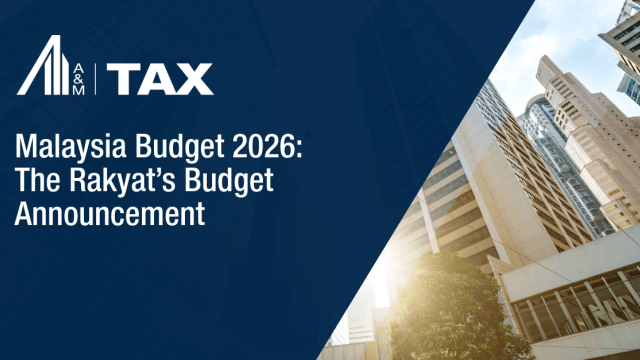Net Operating Losses and State Tax Rates - As States Get Tough and Tighten Their Belts, Taxpayers Often Feel the Squeeze
The actor Gregory Peck said, “Tough times don’t last, tough people do, remember?” Although this quote is generally directed towards individuals, it is equally applicable to states that are attempting to “get tough” to make it through these difficult economic times. While it is no secret that many states are feeling the effects of a sluggish economy, the actual statistics may be somewhat surprising. As of the third quarter of 2010, state tax collections, adjusted for inflation, were approximately 11 percent below pre-recession levels. Additionally, although states were able to close large shortfalls in fiscal years 2009–2011, approximately 44 states and the District of Columbia are still projecting budget shortfalls for fiscal year 2012 totaling roughly $112 billion. Further, 26 states have already projected budget shortfalls for fiscal year 2013 totaling $75 billion. Based on this, it is clear that states must take action — and quickly — to close these budget gaps.
This article discusses two ways in which states are attempting to “get tough” (even if it is at the taxpayer’s expense) to reduce or eliminate budget gaps:
- By suspending or limiting net operating loss (NOL) deductions; and
- By increasing state tax rates.
Finally, in the hope of ending on a more upbeat note, this article points out that not all of the news is bad for taxpayers. Some states have taken a different approach to closing budget shortfalls. These states are attempting to increase the tax base by enacting, or considering, favorable tax legislation to attract new businesses in the hopes of raising revenue and closing budget shortfalls.
Net Operating Loss Deductions
Federal law generally provides for a 2-year carryback and a 20-year carryforward period for NOLs. However, many states have their own rules for NOL deductions. For example, a large number of states do not permit NOLs to be carried back to prior periods and/or employ carryforward periods that are shorter than 20 years. Additionally, because of the potential budget shortfalls discussed above, many states are taking action to diverge even further from the federal NOL rules to limit NOL deductions that are available to be taken in a given year. The following discussion highlights some of the more recent NOL suspensions and limitations enacted or proposed by various states.
California
California has a history of enacting NOL limitations that are unfavorable to taxpayers. The state suspended the use of NOL deductions for 2002 and 2003, and in 2008 and 2009 NOL deductions were again suspended for taxpayers with at least $500,000 of income subject to tax in each year. However, this was not the end of NOL suspensions in the Golden State.
As part of the California budget signed into law by Governor Arnold Schwarzenegger on October 8, 2010, a trailer bill, Senate Bill 858, was enacted. It contained several California tax law changes. Notably, S.B. 858 extended the 2008 and 2009 NOL suspensions to 2010 and 2011. For 2010 and 2011, NOL deductions were suspended for taxpayers with pre-apportioned income of more than $300,000 for the taxable year. S.B. 858 did allow for the carryover period to be extended to take into account these suspensions.
In addition to the extension of the NOL suspensions, S.B. 858 also repealed the allowance of a two-year carryback for NOLs that are attributable to tax years beginning on or after January 1, 2011. However, in its place, S.B. 858 allowed for the two-year carryback of NOLs attributable to taxable years beginning on or after January 1, 2013. This two-year carryback of NOLs is to be phased in as follows:
- For NOLs attributable to 2013, 50 percent of the NOL may be carried back;
- For NOLs attributable to 2014, 75 percent of the NOL may be carried back; and
- For NOLs attributable to years after 2014, 100 percent of the NOL may be carried back.
Colorado
House Bill 10-1199 provides for a limitation on the amount of NOLs that may be deducted from federal taxable income. The maximum amount of NOLs that a corporation may subtract from federal taxable income is $250,000 for tax years beginning on or after January 1, 2011, and before January 1, 2014. Further, all NOLs may be carried forward one additional year for each tax year that a corporation is prohibited from subtracting a portion of such NOLs from federal taxable income. Finally, any portion of an NOL that cannot be used because of the $250,000 limitation may be increased by 3.25 percent per year.
Illinois
Signed into law by Governor Pat Quinn on January 13, 2011, Senate Bill 2505 suspends the use of NOL deductions for taxable years ending after December 31, 2010, and prior to December 31, 2014. It is important to note that this suspension does not apply to S corporations, and that the carryover period will be extended by the number of years affected by the suspension.
Indiana
Indiana House Bill 1004, enacted on May 10, 2011, makes one significant change to the treatment of NOLs. Namely, it disallows NOL carrybacks after December 31, 2011.
Montana
Montana Senate Bill 70 proposed the elimination of the Montana NOL carryback provision for any NOL sustained after December 31, 2010. However, S.B. 70 died in Standing Committee on April 28, 2011.
State Tax Rate Increases
Although the vast majority of states have not recently adopted legislation increasing tax rates, two states have in fact gone down this path in an effort to increase revenues. The following discussion highlights the tax rate changes in Connecticut and Illinois.
Connecticut
On May 4, 2011, Connecticut Governor Dannel Malloy signed Senate Bill 1239, the fiscal year 2012 budget bill, which makes several tax changes. Notably, it increases and extends the current 10 percent surcharge. For tax years commencing on or after January 1, 2009, and prior to January 1, 2012, a 10 percent surcharge is imposed. However, for tax years commencing on or after January 1, 2012, but before January 1, 2014, the surtax is increased to 20 percent. There are two exceptions to the Connecticut surcharge: companies that pay the $250 minimum tax or that have less than $100 million in gross income are not subject to the surcharge.
Illinois
Illinois Senate Bill 2505, also known as Public Act 096-1496, enacted on January 13, 2011, increases the corporate tax rate to 7 percent (from 4.8 percent) for taxable years beginning on or after January 1, 2011, and ending prior to January 1, 2015. Further, for taxable years beginning on or after January 1, 2015, and ending prior to January 1, 2025, the tax rate is reduced to 5.25 percent. Finally, for taxable years beginning on or after January 1, 2025, the tax rate returns to 4.8 percent. The personal property replacement tax rate remains at 2.5 percent.
It’s Not All Bad News!
As mentioned earlier, not all the news is bad for taxpayers. In an attempt to close budget gaps, some states have realized that “getting tough” means they should attempt to attract new businesses to the state. To this end, some states have offered incentives to companies to encourage businesses to move into the state. In theory, this increase in business activity would result in increased tax revenues in the long run for the state and would help to close budget gaps. While many incentives may be offered by the states, in keeping with the focus of this article, NOLs and tax rates will be examined.
Net Operating Losses
Pennsylvania
On October 9, 2009, Governor Edward Rendell signed into law House Bill 1531. Among many other corporate tax changes, H.B. 1531 increased the cap on NOL deductions. For taxable years beginning after December 31, 2008, the NOL limitation was the greater of $3 million or 15 percent of Pennsylvania taxable income. Prior to this time, the NOL limitation was capped at the greater of $3 million or 12.5 percent of Pennsylvania taxable income. For taxable years beginning after December 31, 2009, the NOL cap was raised again to the greater of $3 million or 20 percent of Pennsylvania taxable income.
In addition to the increase in the NOL limitation cap in Pennsylvania, several other states have considered, but have not yet adopted, taxpayer-friendly NOL legislation. These states are Arizona, Colorado, Maine, Montana, Nebraska and New Hampshire.
Tax Rates
Arizona
Arizona enacted House Bill 2001 on February 12, 2011. In addition to other tax incentives, H.B. 2001 decreased the corporate tax rate from 6.968 percent to 6.5 percent for tax years beginning during 2014. The corporate tax rate further decreases in future years as follows:
- 6 percent for taxable years beginning during 2015;
- 5.5 percent for taxable years beginning during 2016; and
- 4.9 percent for taxable years beginning after 2016.
Indiana
Indiana recently passed House Bill 1004 on May 10, 2011. Similar to H.B. 2001 in Arizona, H.B. 1004 phases in a lower adjusted gross income tax rate for corporations. After June 30, 2012, and before July 1, 2013, the rate is reduced from 8.5 percent to 8.0 percent. It further decreases as follows:
- After June 30, 2013, and before July 1, 2014, the rate reduces to 7.5 percent;
- After June 30, 2014, and before July 1, 2015, the rate reduces to 7.0 percent; and
- After June 30, 2015, the rate reduces to 6.5 percent.
For taxpayers subject to rate changes during their tax year, a blended tax rate must be computed as follows:
- Multiply the number of months in the taxpayer’s taxable year that precede the month the rate changed by the rate in effect before the rate change;
- Multiply the number of months in the taxpayer’s taxable year that follow the month before the rate changed by the rate in effect after the rate change; and
- Divide the sum of the amounts determined under the first two steps by 12. The rate that is determined must be rounded to the nearest one-hundredth of one percent (0.01 percent).
Missouri
Pursuant to Senate Bill 19, enacted on April 26, 2011, Missouri will phase out its corporate franchise tax on businesses with more than a $10-million post-apportioned franchise tax base. For tax years beginning on or after January 1, 2016, no annual franchise tax will be imposed.
North Dakota
North Dakota recently enacted House Bill 1047, which reduces the corporate tax rates in each bracket for tax years beginning after December 31, 2010. The tax rate on the first $25,000 of taxable income has been lowered from 2.1 percent to 1.68 percent, and the tax rate on taxable income greater than $25,000, but not greater than $50,000, is reduced from 5.25 percent to 4.23 percent. Finally, the tax rate on taxable income greater than $50,000 is reduced from 6.4 percent to 5.15 percent.
Alvarez & Marsal Taxand Says:
As states attempt to “get tough” to close budget gaps, taxpayers will need to stay aware of state tax law changes, particularly NOL deduction rule changes and increased corporate tax rates. These changes can have a significant impact on the state tax provision and on the amount of work created in the tax department. Taxpayers must keep in mind that both NOL and rate changes must be accounted for in the period that includes the enactment date of the tax law change. Among other items, taxpayers will need to evaluate whether it is more likely than not that NOLs will be utilized after a tax law change and must determine the impact that this has on the valuation allowance. Further, consideration will need to be given to items such as whether rate changes will impact a taxpayer’s deferred tax assets and liabilities. As you can see, tax departments can quickly find themselves overwhelmed.
Finally, time will certainly tell whether states that have gotten more aggressive by offering incentives in an attempt to raise the tax base, and thus pulling businesses into their jurisdictions, will prevail over those that seem to believe the only option is to further tax businesses operating in the state. Out of the gates there is certainly more activity by businesses giving consideration to relocation based on tax incentives than we have seen in a long time.
Footnote
Elizabeth McNichol, Phil Oliff, and Nicholas Johnson, “States Continue to Feel Recession’s Impact,” Center on Budget and Policy Priorities, March 9, 2011.
Disclaimer
As provided in Treasury Department Circular 230, this publication is not intended or written by Alvarez & Marsal Taxand, LLC, (or any Taxand member firm) to be used, and cannot be used, by a client or any other person or entity for the purpose of avoiding tax penalties that may be imposed on any taxpayer.
The information contained herein is of a general nature and based on authorities that are subject to change. Readers are reminded that they should not consider this publication to be a recommendation to undertake any tax position, nor consider the information contained herein to be complete. Before any item or treatment is reported or excluded from reporting on tax returns, financial statements or any other document, for any reason, readers should thoroughly evaluate their specific facts and circumstances, and obtain the advice and assistance of qualified tax advisors. The information reported in this publication may not continue to apply to a reader's situation as a result of changing laws and associated authoritative literature, and readers are reminded to consult with their tax or other professional advisors before determining if any information contained herein remains applicable to their facts and circumstances.
About Alvarez & Marsal Taxand
Alvarez & Marsal Taxand, an affiliate of Alvarez & Marsal (A&M), a leading global professional services firm, is an independent tax group made up of experienced tax professionals dedicated to providing customized tax advice to clients and investors across a broad range of industries. Its professionals extend A&M's commitment to offering clients a choice in advisors who are free from audit-based conflicts of interest, and bring an unyielding commitment to delivering responsive client service. A&M Taxand has offices in major metropolitan markets throughout the US., and serves the U.K. from its base in London.
Alvarez & Marsal Taxand is a founder of Taxand, the world's largest independent tax organization, which provides high quality, integrated tax advice worldwide. Taxand professionals, including almost 400 partners and more than 2,000 advisors in nearly 50 countries, grasp both the fine points of tax and the broader strategic implications, helping you mitigate risk, manage your tax burden and drive the performance of your business.
To learn more, visit www.alvarezandmarsal.com or www.taxand.com.





